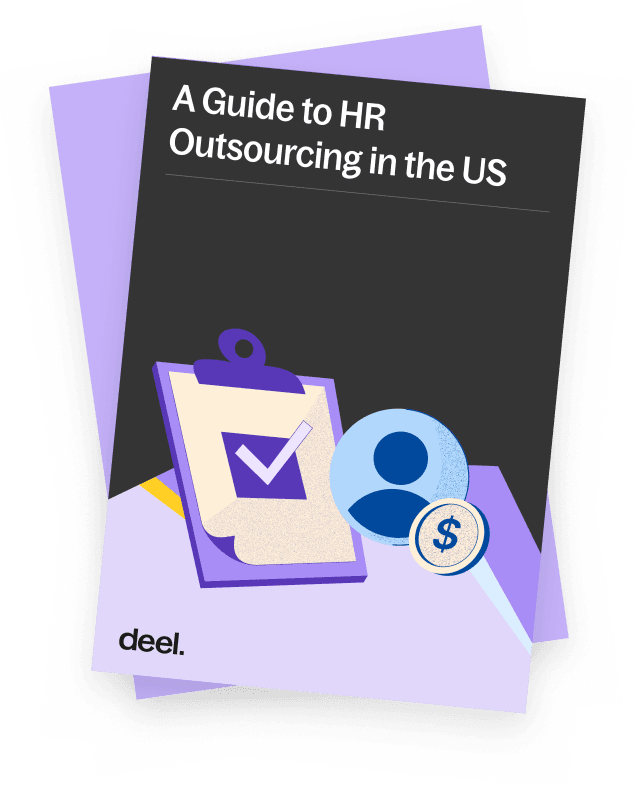Article
5 min read
Qualifying Life Events: A Quick Guide for Employers and Employees
PEO
US payroll

Author
Dr Kristine Lennie
Last Update
May 05, 2025

-
A qualifying life event (QLE) is a significant change in a worker's circumstances that entitles them to make changes to their health insurance plan outside of the annual enrollment period.
-
Employers are responsible for ensuring QLEs are handled correctly, as failure to do so may result in significant financial and legal repercussions.
-
Deel PEO is an all-in-one HR and compliance solution that handles all benefits-related admin and empowers US teams to focus on growth and innovation.
Big life changes—like moving addresses, welcoming a new child, or getting married—can often impact employees’ health insurance coverage.
In the US, these significant shifts are known as qualifying life events (QLEs) and they make employees eligible to modify their existing health insurance outside of the set annual enrollment period. Employers and HR teams need to understand how QLEs are classified and handled in order to best help employees manage these transitions.
With Deel PEO, you will no longer need to spend time and resources navigating compliance and workforce management concerns. Our expert service specializes in handling HR processes across all 50 states, so you can focus on scaling your business.
In this article, we highlight key information about QLE for employers and employees.
What is a qualifying life event?
QLEs are specific event types defined by the Internal Revenue Service (IRS). Employers have the responsibility to accommodate QLEs and ensure employees can make the necessary revisions to their benefit plans in response to significant life changes.
Mishandling of QLEs, such as misclassification, failure to document or process information correctly, or not informing employees of their rights, can lead to significant penalties and legal consequences for employers and insurance providers.
What counts as a QLE?
A summary of common QLEs is given in the table below:
| Category | Examples |
|---|---|
| Family changes | - Marriage or divorce - Legal separation - Birth or adoption - Domestic partnership changes (starting or ending) - Death of a spouse or dependent |
| Employment changes | - Starting a new job - Reduction in hours or job loss - Spouse gains or loses coverage |
| Residence changes | - Change in address that affects plan access |
| Loss of other coverage | - Aging out of a parent’s plan (turning 26) - End of Consolidated Omnibus Budget Reconciliation Act (COBRA) - Losing eligibility for Medicaid/CHIP - Becoming eligible for Medicare (turning 65) |
| Other qualifying events | - Gaining US citizenship or legal residency - Court orders (e.g., child custody) - Changes in income that affect Affordable Care Act (ACA) plan eligibility |
How is a QLE process managed?
Employees who experience a significant life event need to inform their employer to trigger the associated QLE administrative actions. In this section, we discuss what the process looks like from a worker and HR perspective
Process for employees
When a QLE occurs, employees must notify the employer as soon as possible and provide evidence to support their claim (for instance, a marriage or birth certificate). From the day of the QLE, employees enter a Special Enrollment Period (SEP), during which they can make changes to their healthcare plan.
SEPs are usually 30-60 days, depending on the type of QLE and the insurance provider, and in that timeframe, employees can:
- Enroll in a new plan
- Upgrade or downgrade your current plan
- Add/remove a dependent (usually, spouse or children)
- Cancel a plan
Process for HR Teams
HR teams are responsible for managing the process of benefits plan changes following a QLE in a timely (30-60 days) and compliant manner. This involves the following:
-
Reviewing and verifying all documentation submitted by the employee
-
Communicating clearly what options are available to the employee and what deadlines there are
-
Enrolling or updating the employee's benefit plan as required
-
Creating, maintaining, and managing all employee records, including communicating the necessary information to relevant parties (such as insurance providers)

Free guide
A Beginner’s Guide to HR Outsourcing
Common mistakes HR teams could make and how to avoid them
There are several mistakes that HR teams need to be aware of in order to limit liability risks when handling QLE processes. We summarise the most common ones and how to avoid them in the table below:
| Common Mistake | Why It’s a Problem | How to Avoid |
|---|---|---|
| Misclassifying events | Events must meet certain IRS criteria to qualify. For example, voluntary resignation is only a QLE under certain circumstances that include loss of health coverage. | Carefully review IRS guidelines and stay updated on changes to QLE requirements. |
| Verbal notice about QLE from employees | Risks miscommunication, missed deadlines, delays, and inaccurate records. | Require written notice from employees to ensure accurate, timely processing. |
| Delayed documentation collection | This can result in errors, processing delays, and employer liability. | Establish and communicate clear procedures for obtaining and submitting necessary documents. |
| Assuming state laws override federal employer plan rules | Mistakenly assuming state laws supersede federal laws can lead to non-compliance. | Familiarize HR teams with both state and federal regulations; comply with the stricter standard. |
| Not informing employees about deadlines | Failure to inform employees of deadlines could result in missed opportunities to update or change plans. | Communicate deadlines proactively, clearly, and in writing, across multiple channels. |
What if employees miss the QLE window?
If an employee fails to report their QLE or misses their window, they can no longer make changes to their benefit plans until the next annual open enrollment period. This means they might not have appropriate or full coverage, or face higher than necessary out-of-pocket costs. Employers might also face compliance challenges, as well as increased administrative burden, and potential legal and financial penalties.
Employers can help employees who have missed their QLE window by providing relevant information (including how to apply for a possible appeal), assisting in COBRA enrollment, and documenting and offering guidance.
Get QLEs right—every time
QLEs are significant changes in circumstances that enable employees to amend their insurance plans outside of the annual open enrollment period. Correctly documenting and executing this process is essential for both employers and employees to mitigate compliance risks and costs, and increase worker satisfaction.
Employers have the responsibility to facilitate the process and any relevant communication, which can become increasingly challenging as companies grow and hire cross-state.
Deel PEO is designed to help US-based companies manage distributed teams across all 50 states. By handling HR, payroll, and compliance, Deel PEO enables you to focus on scaling your business, without having to worry about administrative burden of navigating complex rules and regulations.
Find out more by booking a demo with us.
Platform Tour
This article is not a substitute for legal advice. Please check official websites or seek legal advice before taking action.
FAQs
Does quitting your job qualify as a life event?
Yes, but only in certain cases. Individuals who resign from their jobs and subsequently lose their employer-sponsored health insurance become eligible for a SEP to enroll in another health insurance plan.
Does my spouse losing their job qualify as a life event?
Yes, if your spouse loses their job and this results in loss of health insurance coverage for you, this is a QLE.
Can I drop my employer's health insurance at any time?
In general, no. You can only drop your employer health insurance during the annual open enrollment period, a SEP resulting from a QLE, or at the end of employment.
What is a qualifying survivor?
A qualifying survivor is a person who receives certain benefits—such as health insurance coverage or retirement benefits—after the death of an insured family member. You can usually only specify who that person is during a QLE or the open enrollment period.
Is turning 26 a qualifying life event?
Yes. This is because when someone turns 26, they typically can no longer be on a parent's health insurance plan.

About the author
Dr Kristine Lennie holds a PhD in Mathematical Biology and loves learning, research and content creation. She had written academic, creative and industry-related content and enjoys exploring new topics and ideas. She is passionate about helping create a truly global workforce, where employers and employees are not limited by borders to achieve success.












